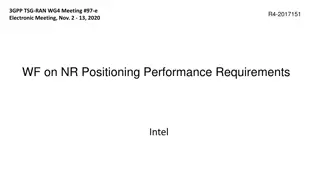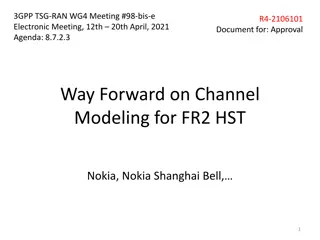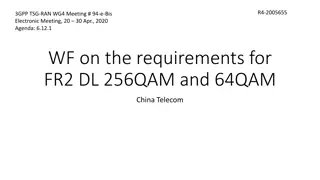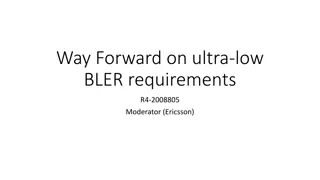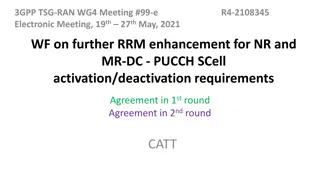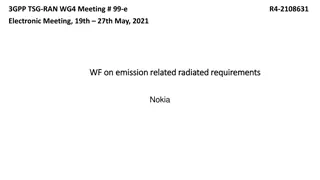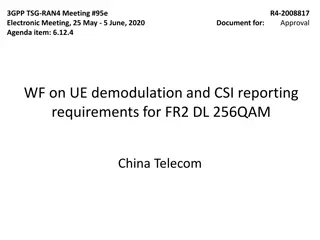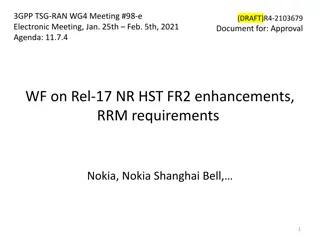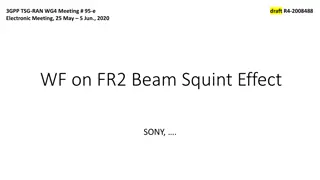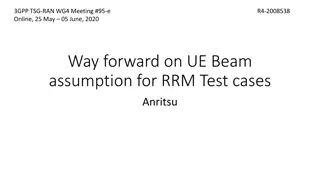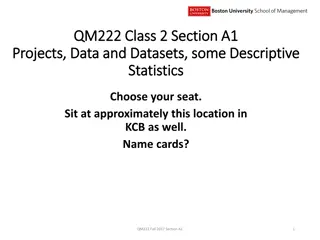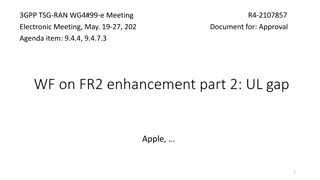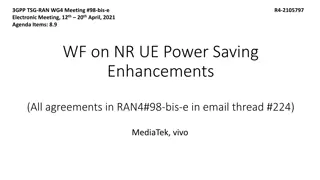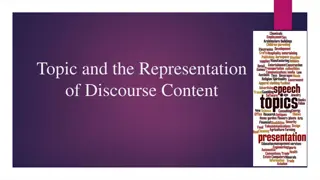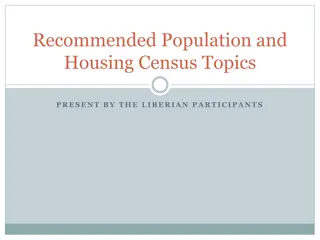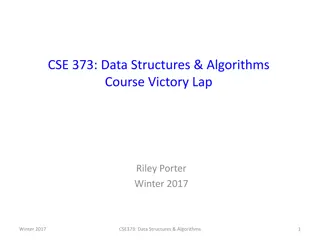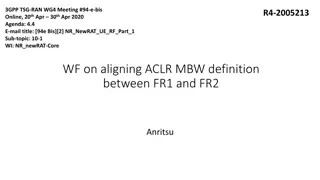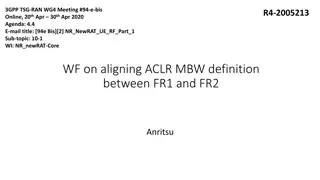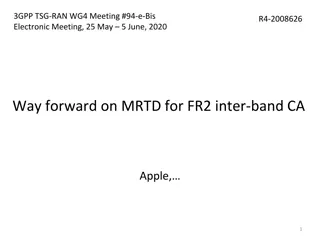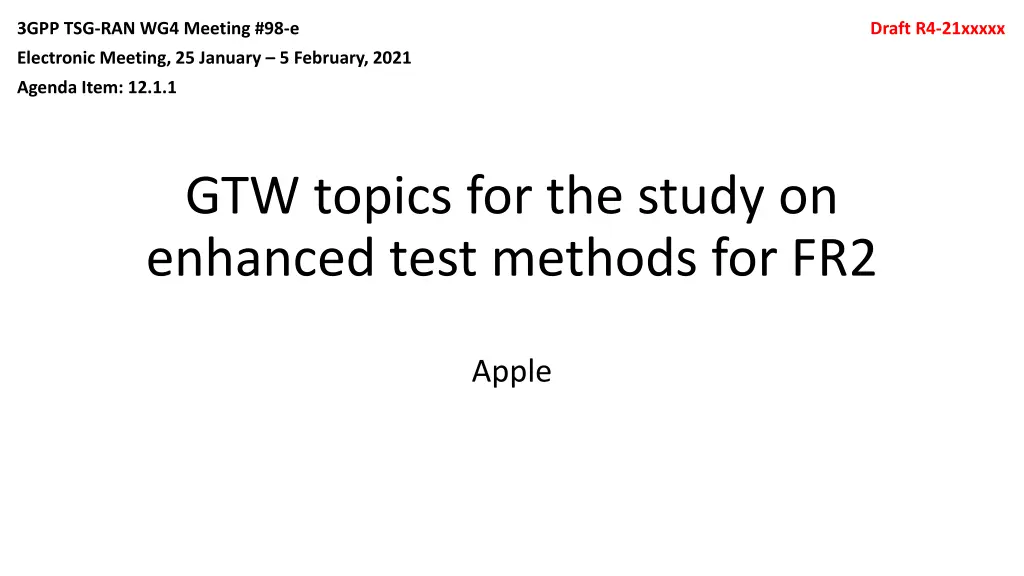
Enhanced Test Methods for FR2 Apple - 3GPP TSG-RAN WG4 Meeting #98-e
Explore key topics related to high DL power and low UL power in the context of the DNF system applicability during the 3GPP TSG-RAN WG4 Meeting #98-e. Delve into options considering the UE models, DNF methods, and impact on test systems. Propose conclusions and recommendations for further study.
Download Presentation

Please find below an Image/Link to download the presentation.
The content on the website is provided AS IS for your information and personal use only. It may not be sold, licensed, or shared on other websites without obtaining consent from the author. If you encounter any issues during the download, it is possible that the publisher has removed the file from their server.
You are allowed to download the files provided on this website for personal or commercial use, subject to the condition that they are used lawfully. All files are the property of their respective owners.
The content on the website is provided AS IS for your information and personal use only. It may not be sold, licensed, or shared on other websites without obtaining consent from the author.
E N D
Presentation Transcript
3GPP TSG-RAN WG4 Meeting #98-e Draft R4-21xxxxx Electronic Meeting, 25 January 5 February, 2021 Agenda Item: 12.1.1 GTW topics for the study on enhanced test methods for FR2 Apple
Key topics to conclude during RAN4 #98 High DL power / low UL power: applicability of the DNF system ETC impact on test system Test time reduction: prioritization of candidate solutions Check status of TPs Remaining issues with the TPMI method Band n262 testability
High DL power / low UL power: applicability of the DNF system Summary of options to conclude the applicability of the DNF system: Option 1: With the considered UE models (arrays on a phone size ground plane), figure of merits such as EIRP, TRP, and Spherical Coverage are not influenced dramatically from range length especially if the dynamic beam scenarios is considered Option 2: DNF method may be possible for single panel UE (single panel per band) with the antenna panel offset declaration. For multi-panel UE (multi-panel per band), it seems complicated manufacture declaration is needed for path loss compensation Option 3: DNF is not suitable for spherical coverage and beam peak searches (for more information, see applicability discussion above). We should instead focus on CFFNF and CFFDNF instead Option 4: Beam peak searches and spherical coverage test cases are not applicable regardless of black-box or black&white-boxapproach. Performing these tests with the NF measurement probe would require the extensive black&white-boxapproach which is not deemed a feasible enhancement of the methodology. The low UL power/high DL power EIRP/EIS test cases in the known FF BP direction as well as spherical coverage and beam peak search are not applicable to the black box approach. The applicability of the low UL power/high DL power EIRP/EIS test cases in the known BP direction and with the black&white-boxapproach is FFS. Option 5: Beam peak searches and spherical coverage test cases are not applicable to black-box. For black&white-boxapproach, performing these tests with DNF would require the antenna array panel offset to be declared. This could be seen complex in case of multi-panel UE (multi-panel per band) The low UL power/high DL power EIRP/EIS test cases in the known FF BP direction as well as spherical coverage and beam peak search are not applicable to the black box approach. The applicability of the low UL power/high DL power EIRP/EIS test cases in the known BP direction and with the black&white-boxapproach is FFS. Option 6: Capture DNF for Beam peak searches and spherical coverage test cases in TR, meanwhile such method is not RAN4 recommendation Proposal: Option 4 is agreed with a view toward resolving the FFS by the next meeting Adopt option 4 as RAN4 conclusion meanwhile capture DNF for Beam peak searches and spherical coverage test cases into TR
ETC impact on test system EIRP/EIS beam peak searching procedure under ETC: Option 1: perform 3D scan Note : option 2 is not roubust enough for UE which with multi-panels Option 2: beam peak search within a certain cone of directions around peak position under NTC (by declaration or NTC peak searching results) -> If UE support the declaration of option 2, then option 2 can apply for such UE; otherwise option 1 will be applied for testing. -> By default, option 1 applied; if declaration present from UE vendor, then option 2 applied. Note: option1 is needed for UE with best antenna pannel switch based on temperature and/or UE without declaration present (Further work on the texts into TR if needed) RAN4 agrees to define a temperature tolerance for FR2 ETC system. Several aspects need to consider: an accuracy of temperature control by an air conditioner accuracy of a thermocouple to measure a temperature in the ETC enclosure temperature deviation at the center of the QZ The value of temperature tolerance is FFS. [+/- 4] degrees Celsius tolerance is the starting point Test only can be executed under target temperature within the tolerance Test equipment vendors are encouraged to share thermal regulation schemes and anticipated thermal regulation capabilities. Examples: How much heat can be extracted at each temperature (W) How to ensure heat transfer coefficient of DUT is high enough in all orientations Treatment to accommodate non hand-held form factors
Test time reduction: prioritization of candidate solutions Background 6 test time reduction options were documented at the outcome of RAN4 #97 [R4- 2017597] 4 new options were proposed in the first round of RAN4 #98 discussions [R4- 2103769] WF discussions during the second round organized the options as follows: 1-MG 2-RSRP 3-Single Pollink 4-Others Proposal: Options 1-MG, 2-RSRP, and 3-Single Pollinkare prioritized in the study, and their completion can conclude the test time reduction objective Work on 4-Others, including potential new options, is not precluded
Check status of TPs [R4-2103966] Low UL Power/High DL Power Test Cases (Keysight, R&S) Trending toward agreeable? Key issues? [R4-2103967] polarization basis mismatch (vivo) Trending toward agreeable? Key issues? [R4-2103968] TP to TR 38.884 on Inter-band DL CA in FR2 (Anritsu) Trending toward agreeable? Key issues?
Remaining issues with the TPMI method Detailed TPMI method enhancement coverage is FFS if TPMI method is applicable for clause 6.2 of TS38.101-2, then 2 port SRS (nrofSRS-Ports = 2) shall be configured TPMI method enhancement coverage Rel-15 nonCoherent UEs Rel-15 coherent UEs Rel-16 nonCoherent UEs Rel-16 coherent UEs Rel-16 nonCoherent UEs which support uplink full power transmission clause 6.2 of TS38.101-2 (Transmitter power) No [Yes] No [Yes] Clause 6.1, 6.3 to 6.6 of TS38.101-2 (other Transmitter characteristics) No [Yes] No [Yes] [Yes] [Yes] Which TPMI index per test AoA shall be sent by TE is FFS Option1: Fixed TPMI index Option2: Optimal TPMI index Option2-A: TE to configure the UE with SRS resources at each grid point Option2-B: TE simply try out all TPMIs and choose best one UE vendors are encouraged to study the UE EIRP performance delta between Option1 and Option2 TE vendors are encouraged to study the feasibility/pros/cons of Option2-A/B compared to Option1
Band n262 testability Quality of quiet zone MU at 49 GHz Option 1: The QoQZ MUs at 49 GHz are within the example MU value defined in RAN5 No increase in QoQZ MU is expected necessary for 49 GHz Option 2: Make the following changes to the Multiple antenna MU element: MU element description The applicability Potentially the MU element sample value Proposal: The two options are not mutually exclusive and can be agreed Companeis are encouraged to bring analysis for band n262 testability.

